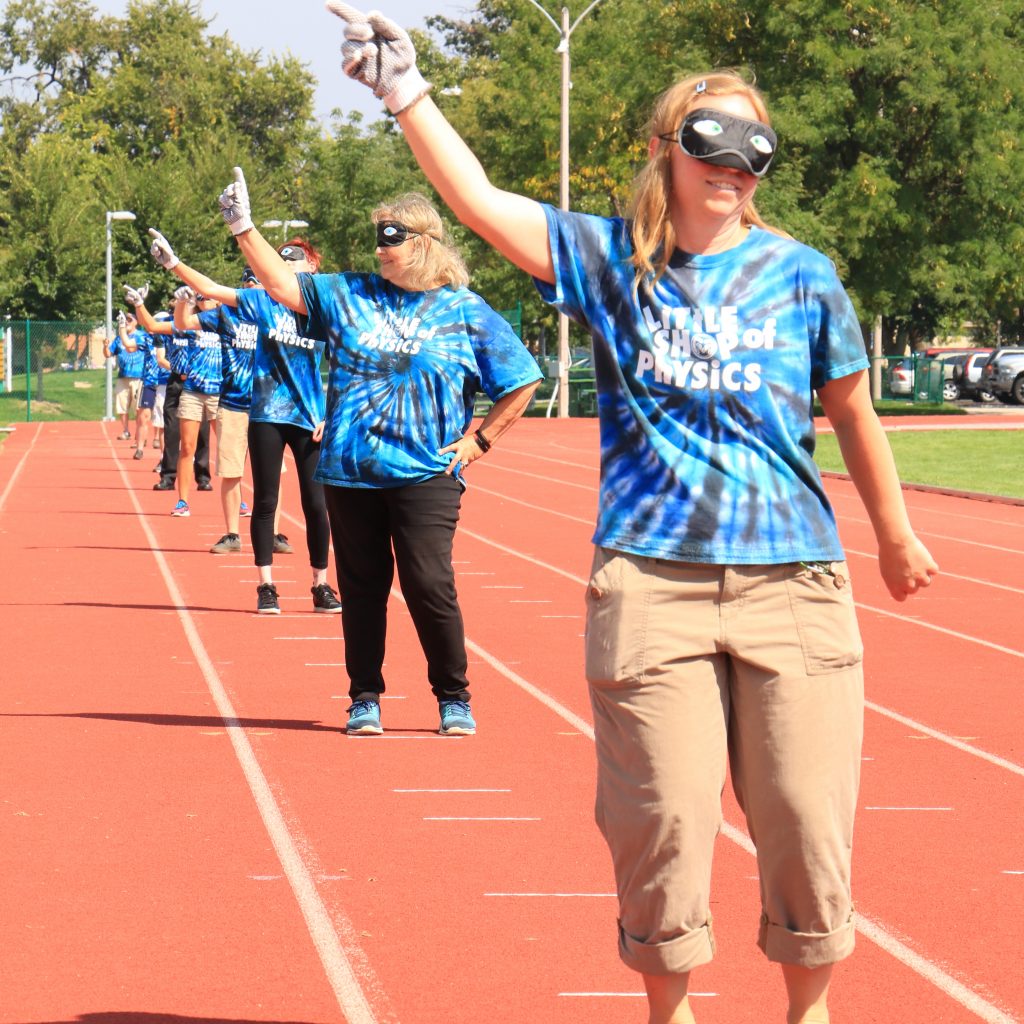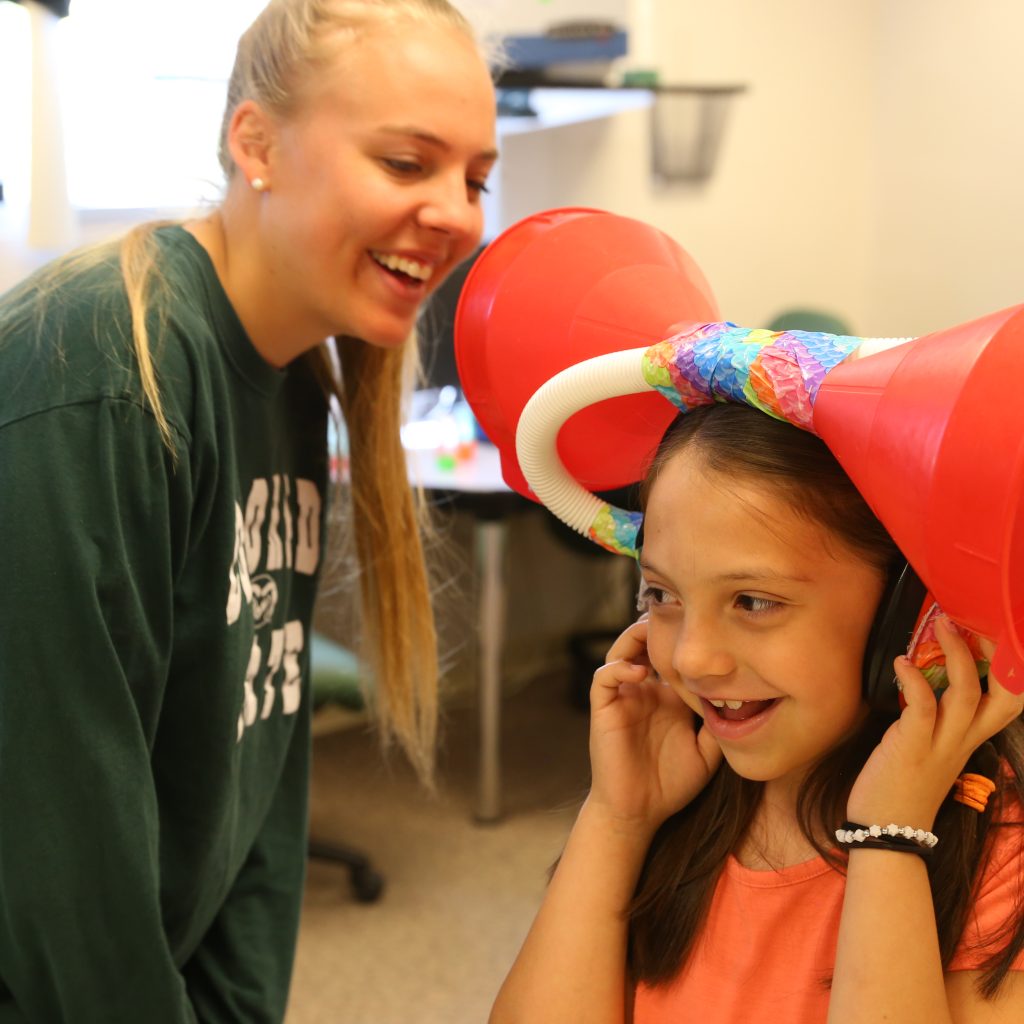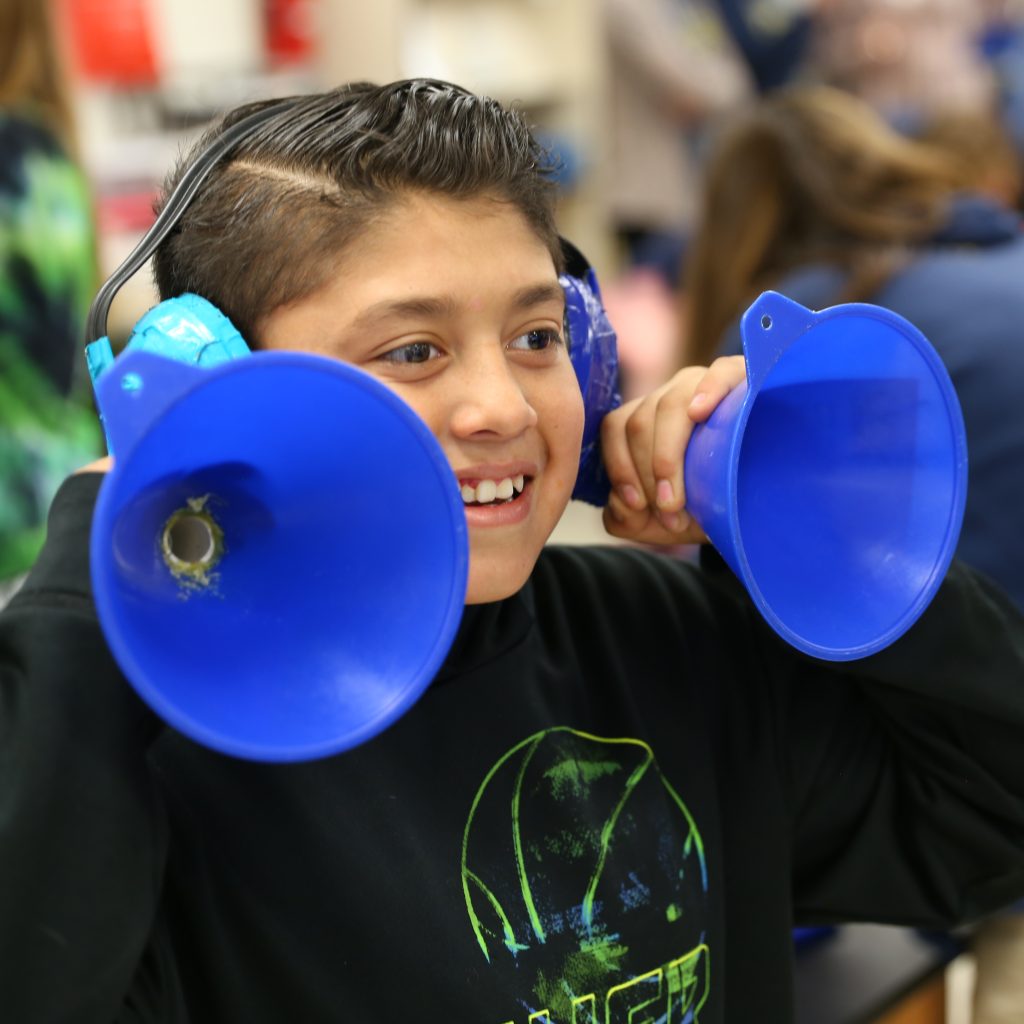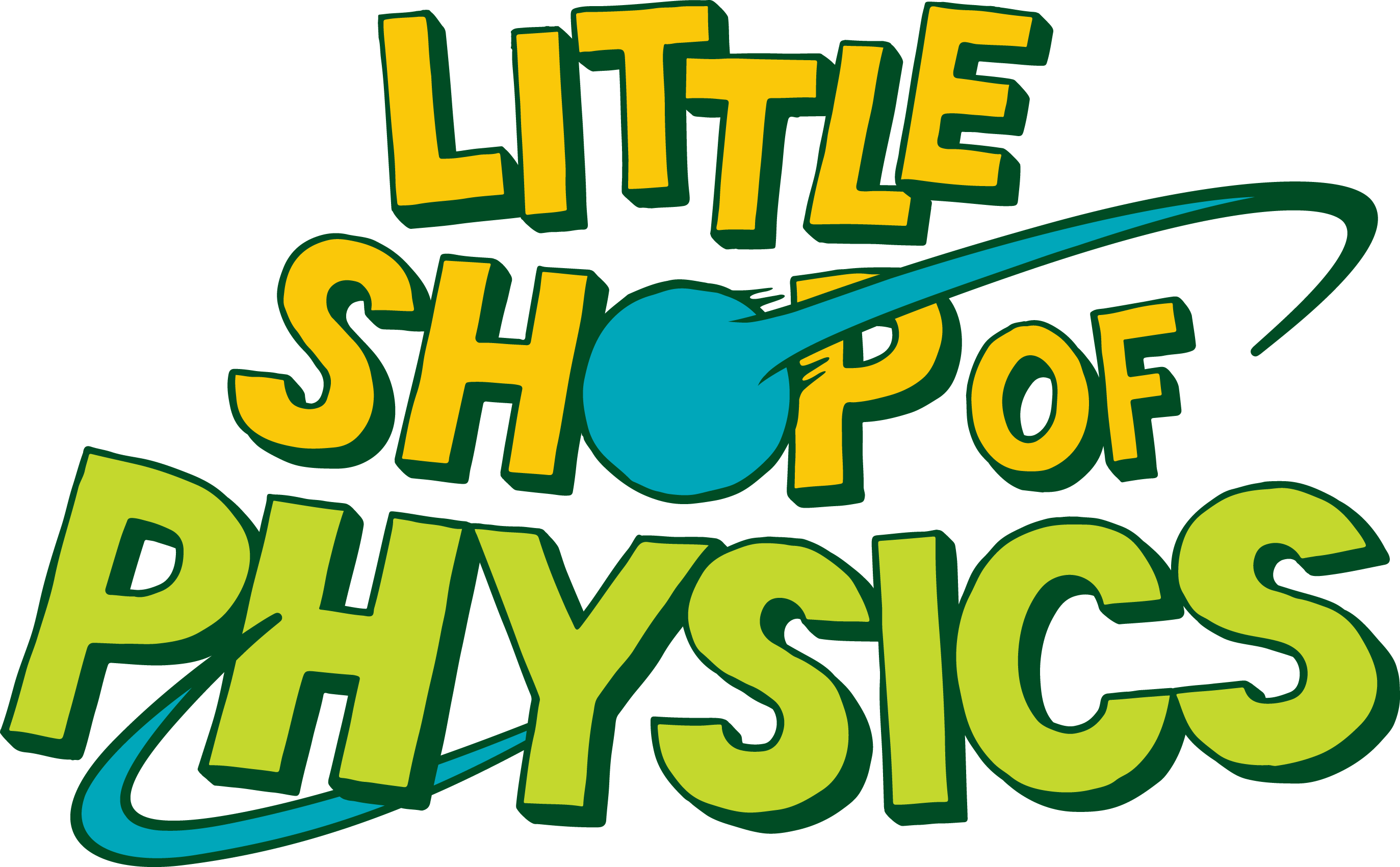Everything You Need To Know About Sound
What happens when you blow a trumpet through a bubble? You’ve heard of an optical illusion—how about an auditory illusion? The resources on this page answer these questions and more!
We love to explore sound because it’s an important and prominent physical phenomenon in everyday life, yet has some really fascinating and surprising properties. It’s valuable but potentially tricky for students to understand what sound is, how it exists in the world. Sound is a wave which requires a medium for propagation (unlike electromagnetic waves, such as light and radio waves, which can propagate in a vacuum).
Theory
Vibrating objects can produce sound — think of a guitar string, or a speaker cone. However, we only hear sound if a wave can propagate through some medium from the vibrating object to our ears. If the medium is air, the wave propagates as a series of high-pressure regions (‘compressions’) and low-pressure regions (‘rarefactions’). These alternating pressure zones result in variable forces on — and thus vibration of — the tympanic membrane and small bones of the inner ear. These vibrations are converted to electrical impulses in nerves and transmitted to the brain, which creates the perception of sound. But, as we’ll see, air isn’t the only medium through which sound can reach our ears…
Application
In the following series of videos, we suggest a sequence of explorations and explanations that will help your students understand the wave nature of sound. We’ve organized them in terms of “the 5 E’s”: Engage, Explore, Explain, Extend, and Evaluate. This structure has worked well for us in teacher workshops, and we hope it works well for you too! However, we always welcome your feedback. Please contact us anytime to let us know what’s working, what’s not, and how we can make this resource more useful for you. Enjoy!
Engage
The purpose of the Engage segment is to pique students’ interest. We don’t need to directly transmit concepts at this stage, merely give students a chance to think and get excited about the topic we’ll be discussing.
Video: Speed of Sound
In this video, the LSOP crew uses disco to demonstrate that sound — like all waves — travels at a distinct speed in a given medium (in this case, to the great relief of the crew, we went with air as the medium).
Explore
In the explore segment, students get to experience firsthand the principles we hope to teach them. We still don’t need to explicitly describe any concepts yet — the students will start working these out as they explore.
Video 1: Chronophones
We promised you an auditory illusion, and here it is! The Chronophones alter sound perception by delaying sound arrival to one ear with respect to the other. We produce this effect quite easily by fixing tubes of two different lengths, each with a funnel on the end, to a set of ear protection muffs. End result (and a nice connection to the Engage video above): Sound always seems to come from the side with the shorter tube! The video linked in this section will show you how to make your own Chronophones to share with your class.
Video 2: Big Ears
Why do owls have dish-shaped faces? Why do you cup your hands around your ears when you need to discern a faint noise? It’s all about gathering more sound and figuring out where it’s coming from. Big Ears, which we make simply by connecting large funnels to a pair of ear protection muffs, are an easy but striking way for your students to explore the directionality and intensity of sound waves. You might suggest they close their eyes and scan the room with their ears!
Explain
Now it’s time to codify and formalize the students’ observations. The following videos can help you elucidate and demonstrate the wave nature of sound in your classroom.
Video 1: Bubble Trumpet
It’s possible (and awesome) to use the bell of a stadium horn (or similar instrument) as a giant bubble wand. Blowing through the horn vibrates the bubble, producing wave patterns on its surface — without popping it! The sound wave can pass through the bubble and still travel through the air to your ears.
Video 2: Voice Vibrations
Another fun, visual demonstration of the wave nature of sound. As we saw in the first Explain video, a sound wave can cause an object to vibrate. In this second video, we use a speaker connected to a microphone to create patterns of vibration in a rubber sheet covered with sand. The movement of the sheet pushes the sand into a particular pattern, away from the parts that vibrate the most (antinodes) and into the places that don’t vibrate (nodes). Because the sound determines the way in which the sheet vibrates, different sounds produce different patterns of sand!
Extend
Once the basic principles are clear, we want to encourage students to expand their thinking and ask questions that go beyond the scope of what we’ve already discussed.
Video: Ramphone
We know that sound waves need a medium to propagate in, and that we ultimately hear sound when our brains process signals from the vibration of small bones in our inner ears. In our day-to-day lives, the medium that sound waves propagate in is typically air, but there’s a more direct route to producing the perception of sound — just vibrate the skull!
Evaluate
It’s important to figure out what students understand after the first four E’s. Tests and quizzes are one option, but there are many others.
This one is up to you — what works best for you and your students? We, for example, have had good results with turning the tables and letting the students make a video at this stage. We’d love to hear what works in your classroom!








